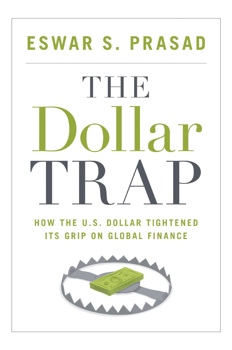[app_audio src=”http://traffic.libsyn.com/smartpeoplepodcast/Episode_127_-_Eswar_Prasad.mp3″]

Eswar Prasad – Author of The Dollar Trap: How the U.S. Dollar Tightened Its Grip on Global Finance. Eswar is a Senior Professor at Cornell University, a Senior Fellow at the Brookings Institution, where he holds the New Century Chair in International Economics, and a Research Associate at the National Bureau of Economic Research. He was previously chief of the Financial Studies Division in the International Monetary Fund’s Research Department and, before that, was the head of the IMF’s China Division.
What we discuss in this episode:
• Is the dollar still the world’s safest currency, even after the financial crisis?
• What does it mean that the US is $17 trillion in debt? Is debt bad?
• At what point does the United States have to pay back its debt?
• How does the euro compare to the dollar?
• Is China a safe place to invest?
Notable quotes from Eswar:[shadowbox]
“On a trade-weighted basis, the value of the US dollar is roughly where it was just before the financial crisis. In fact, the US dollar has become even stronger in it’s role as the global currency.”
“If you think about where one can invest large amounts of money, there is really no alternative to the US economy.”
“There is almost a child-like faith that the US will meet their obligations and that the US will not reduce the value of their debt by printing more dollars.”
“In international finance, everything is relative. Being in the US, one can see all of the warts of the US economic and political systems, but the reality is that other countries are in much worse shape.”
[/shadowbox]
Anyway who finds this topic interesting there is an 6 part documentary about the long history of finance that puts the American debt situation in a great context. http://topdocumentaryfilms.com/the-ascent-of-money/
Pingback: Media Mining Digest 120 – 28 Feb 2014: AAAS Conference, Amygdala and Thalamus, Aphid Control Research, Broadband in Idaho, Cancer Research, Cascade Effect, China and Japan, Chinese Internet, Coding 101, Comcast Growth, Crowdfunding Science, Dollar T
Pingback: Media Mining Digest 120 – 28 Feb 2014: AAAS Conference, Amygdala and Thalamus, Aphid Control Research, Broadband in Idaho, Cancer Research, Cascade Effect, China and Japan, Chinese Internet, Coding 101, Comcast Growth, Crowdfunding Science, Dollar T